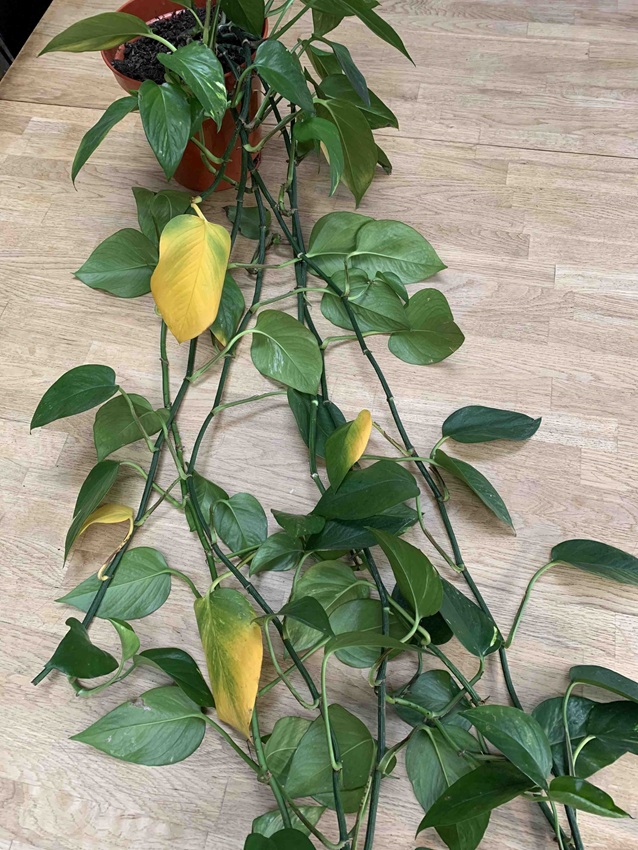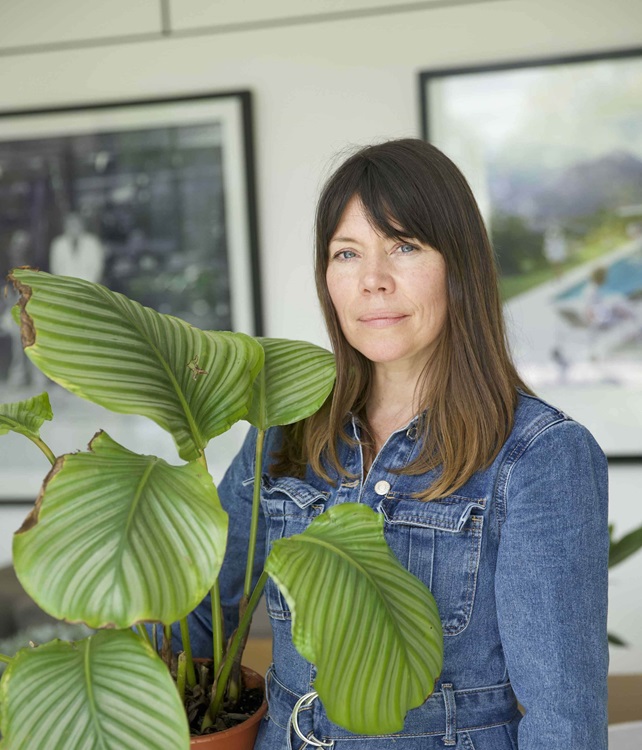
Therefore, we partnered with the author of “The Plant Rescuer”, Sarah Gerrard-Jones, to find out her top tips on best caring for your houseplants.
Sarah offers her expert insights on a wide range of topics, including how not to overwater your houseplants and what to do when their leaves change colour. She also dives deep into how you should alter your care routine during winter and which plants are best for a first-time houseplant parent.
Signs your houseplants need watering and how not to overwater them
Too much water is often thought to be the number one killer of houseplants, but water alone isn't the culprit. Water has an accomplice called light, and when these two get together in unequal amounts, your plants will be in danger. Get the lighting and water balance right, and your plant stands a much better chance.
For decades, humans have enjoyed decorating their interiors with plants, but plants need to be treated as nature, not furniture, if they are to thrive. The majority of people live in semi-shade in our homes, with even the brightest rooms being considerably darker than the outdoors.
Position a plant just a few feet back from a window, and you're reducing the amount of light by at least 50%, if not more. The further away a plant is from a window, the less likely it is to remain healthy and the more likely it is to develop an ailment or be attacked by pests. A plant that gets the right amount of light (and water) will grow; one in low light can struggle to survive.
My top sign that your plant is getting too much water is if the leaves are yellowing all over the plant, not just the lower section.
Brown leaves are the top sign that your plants aren’t getting enough water. This can result from the soil being too dry. Lack of water will often cause leaves to curl and then become crinkly and fall off. Typically, lower leaves are affected first by lack of water.
Every plant in our home has a different watering need; a one-size-fits-all approach will not work. I recommend using one of these methods before watering your plant:
1. Push your finger into the soil as deep as possible and feel for any moisture. If you can feel moisture, your plant doesn't need water.
2. Take a chopstick, push it deep into the soil, leave for a few minutes, and then pull it out. If the chopstick comes out clean, the soil is dry.
3. Weigh the pot in your hands. Picking up your plant (in its pot) and familiarising yourself with how heavy it feels after watering is an easy way to determine whether it needs water or not. If it feels very light, the soil is likely to be dry. If it feels heavy, there is still likely to be water in the soil, and no need to add more.
How to care for your houseplants as we transition from summer into winter

In the shorter, darker, winter months, your plants are forced to try to adapt to the low levels of light, which can cause a stress reaction such as dropping leaves and losing vigour. Therefore, giving your plants as much light as possible during winter is imperative.Move plants towards the brightest windows in your home - but make sure they aren't sitting in a cold draft, above a radiator, or near a fire. As the temperature and light levels drop, so does the amount of water the plant needs to survive. If your plant has stopped producing new leaves, adjust how much and how frequently you water.
As a general guide, if your plant has stopped growing, water 50% less regularly in winter than in summer. Most Cacti and succulents won't need any water from the end of October until spring, but if you notice the plant looking shrivelled, give it a drink.
What to do when the leaves on your houseplants change colour
If the leaves are yellowing and the soil is damp, it could be root rot is to blame. An 'overwatered' plant is often one that's not being provided with enough light to be able to use the volume of water it's given, and the result is that water remains in the soil for a prolonged period of time, starving the roots of oxygen and creating a build-up of bacteria which rot the roots.If your plant looks unhappy, try moving it closer to a window to see if that helps. If it's still deteriorating, take it out of the pot and look at the roots; if any are brown and mushy, snip them off with scissors.
Rinse the roots thoroughly before repotting into fresh soil. Don't water immediately; leave it for at least 2-3 days before adding water. Place the plant on a bright windowsill and hope for the best.

The easiest and hardest houseplants to maintain
There are plants to suit all levels of experience and homes - amongst the easiest to care for, as long as you provide them with enough light, are:
• Snake Plant (Dracaena trifasciata)
• ZZ Plant (Zamioculcas zamiifolia),
• Pothos (Epipremnum aureum)
• Cast Iron Plant (Aspidistra)
• Dragon Tree (Dracaena Marginata)
• Inch Plant (Tradescantia Zebrina)
• Cheese Plant (Monstera Deliciosa)
Harder to please plants include:
• anything from the Calathea family,
• Maidenhair Fern (Adiantum),
• String of Pearls (Senecio rowleyanus),
• Air Plants
• Citrus Trees
Quick tips on how to rescue a dying plant
1. Identify the problem first, i.e., lack of light/too much water
2. Try moving the plant to a brighter spot
3. Check the roots are firm and light in colour and not rotting – typically, these would look brown and feel mushy. Remove the rotten roots and repot in fresh soil
4. As a last resort, many plants can be cut back and regrown. Always research if you can do this with your plant before major surgery!
5. Propagate a cutting. Propagating can be a way to 'save' a dying plant; the plant itself may not survive, but a part of it lives on by propagating it.
Also Read: The UK’s Most Searched For Houseplants
Looking for a new home to pop your new houseplants in? We’ve got a variety of new homes available across locations in the UK including Manchester, Nottingham and Glasgow.


